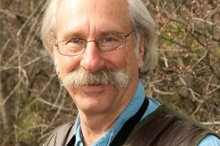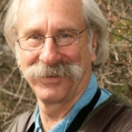

Dan Burden is being honored as a Transportation Ladders of Opportunity Champion of Change.
When I was a child in the 50’s my legs (and later my bicycle) gave me freedom to explore distant farms, ponds, creeks, woods, and the homes of many friends. Frequent busses gave me access to my entire city. From this start, I grew a healthy social network and became energized. Then our nation shifted its ways, and for sixty years, mobility switched almost entirely to moving people in cars. Tens of thousands of neighborhoods declined as people fled central cities for greener suburbs. Historic, character-defining buildings began to rot. I returned to my childhood neighborhood recently and truly shed tears for what was lost.
Halfway from then to now, in 1980, I had an epiphany. While in Australia, also an auto-served nation, I noticed that all their neighborhoods were intact. What was the difference? They had people, and they had cars. I came back to Florida, already seated as the state’s first full time Bicycle Coordinator and without asking permission, changed my job title to “State Pedestrian and Bicycle Coordinator.” This simple change started transformation inside those transportation hallways. Sixteen years later, realizing I needed broader stage, I took to all of North America’s roads almost without pause for the last eighteen years, working in 3,500 towns on people-focused transportation with enhanced car mobility. Through this process, I learned that by offering choices, especially in urban design, not only do pedestrians, bicyclists and transit riders win, so do drivers and local economies. Building sidewalks or trails, for instance, adds value to homes and 7 times more jobs into communities than equal money spent on freeway ramps.
Transportation patterns have always played a critical role in shaping our cities – from foot traffic, to horses, trolleys, canals, railroads, trucks, cars and planes. It’s not surprising that increased mobility in the form of automobile use, led to sprawling cities. Unintended consequences were vast: dying city centers, social isolation, unaffordable roadway systems and separated communities. We have learned a lot since 1950, but maybe the most remarkable lesson is that we are social creatures who need one another to find value and happiness in our lives.
Motorist rebellions against my crusades for walkable communities have not developed. The last thing today's motorists want is growth of traffic. Most taxpayers know instinctively that our road costs have hit the financial breaking point – potholes grow and repaving is forever delayed. Sixty years of limited transportation choice has taught us that building more roads induces more traffic, delay, lost productivity, sprawling communities and increasing waistlines. The answer, actually, is very simple: build robust, revitalized cities with greener, lower speed, inclusive streets that invite maximum exchange (social, retail, jobs and activities) with minimized trip lengths. Build walkable communities.
Growing populations of millennials and retiring boomers, want proximity to goods, services and intact neighborhoods. Seniors are now likely to outlive their abilities to drive cars by 7 to14 years, and they want to age where they currently live. All of us – no matter our age – seek freedom and independence. As much as 80 percent of our built landscape is now suburban, and many of these sprawled places can be saved through mixed-use centers and villages of defining character. Across this country, citizens notice that their health and bank balances are deteriorating from their daily transportation choices. By and large, Americans are tired of wasted hours sitting in traffic, book-ending their work days in frustration, and unsustainable costs, both personal and planetary. Once informed, they advocate for communities through transportation rather than transportation through communities.
Dan Burden is the Director of Innovation and Inspiration at the Walkable and Livable Communities Institute.


